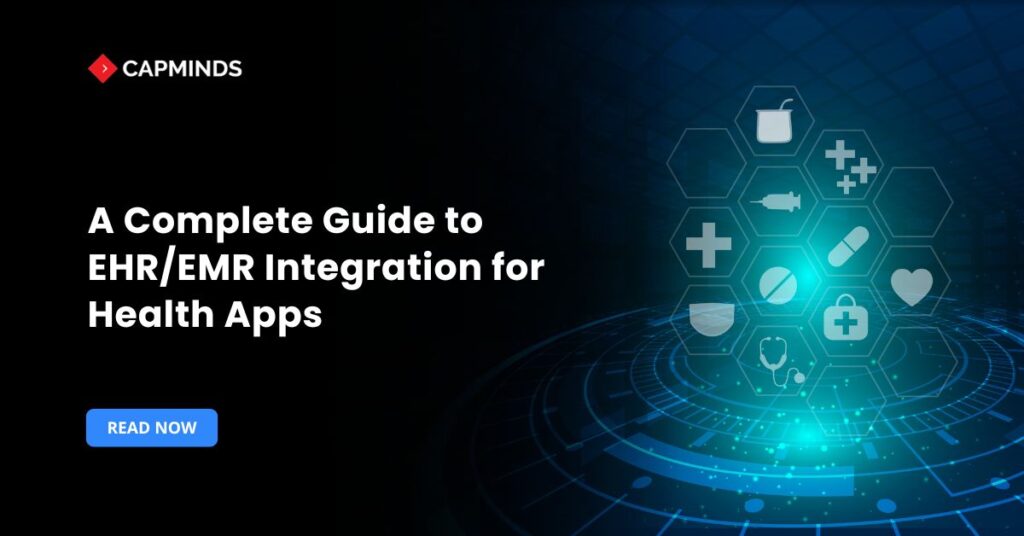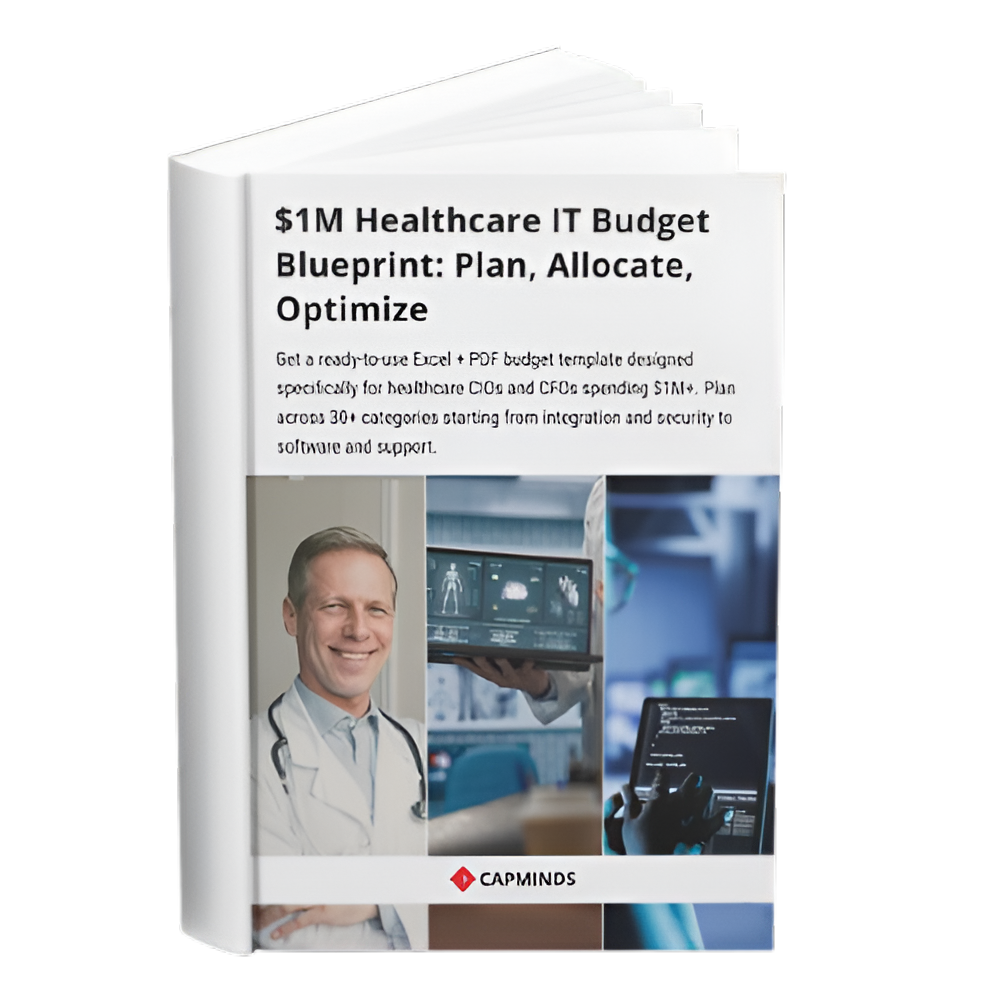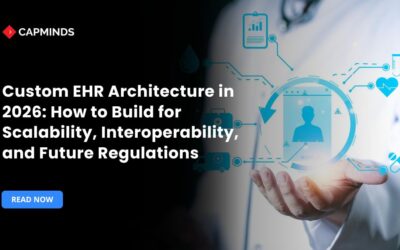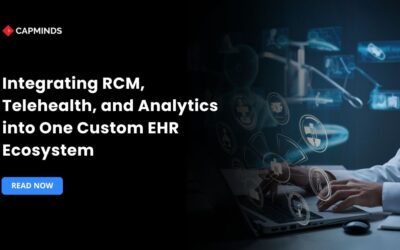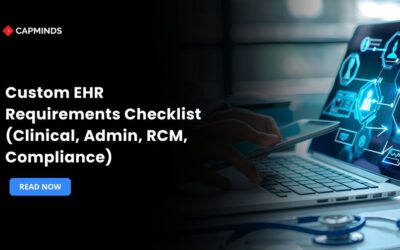A Complete Guide to EHR/EMR Integration for Health Apps
One of the most important aspects of modernizing healthcare is integrating health applications with EHR or EMR systems. Clinicians, CIOs/CTOs, hospital managers, and medical professionals all understand that smooth data sharing can result in improved patient outcomes and more effective operations.
A high-level overview of EHR/EMR integration for health apps is given in this guide, along with an explanation of the difficulties and recommended procedures for a successful deployment.
Challenges of EHR/EMR Integration with Healthcare Apps
Even though the advantages are strong, integrating with EHR/EMR systems might be difficult. App developers and healthcare organizations frequently run across several obstacles and traps:
1. Data Gaps and Inconsistent Formats
EHR systems from different vendors often store data in varying formats and structures. Making data interpretable across systems through mapping and transformation is one of the most difficult technical tasks. Errors or lost information during sharing can result from inconsistent data or a lack of a uniform structure.
The entire purpose of connectedness could be undermined by an integration that results in duplicate records, missing fields, or incorrectly interpreted values due to careless data mapping. For this reason, establishing standard data models and normalizing data are essential activities in any integration effort.
2. Lack of Universal Standards (Interoperability Issues)
Healthcare providers were not previously required to adhere to a single global interoperability standard. Every vendor of EHR frequently uses proprietary data formats or APIs. Therefore, simply integrating one EHR system did not ensure that another would connect with ease. Usually, a fresh, tailored strategy was needed for every integration.
Industry acceptance is still uneven, despite the introduction of standards like HL7 and frameworks like the United States Core Data for Interoperability to increase uniformity. One of the main reasons health apps frequently need to support multiple integration techniques or versions of standards to reach a wide user base is the absence of uniform standards.
3. Vendor-Specific Barriers
The majority of significant EHR systems are proprietary. Navigating the partnership programs or marketplaces of major EHR suppliers can be a time-consuming aspect of working with them.
Long negotiations and proving rigorous compliance and value may be required to obtain access to a vendor’s API or approval to integrate an app. Furthermore, even two hospitals utilizing “the same” EHR may require custom integration work because each hospital may operate a highly customized version of the system. This variability adds complexity and effort to integration projects.
4. Privacy, Security, and Compliance Risks
Patient health information is highly sensitive and governed by strict laws. When systems are interconnected, robust security measures are required to prevent data breaches. Privacy must always come first. Each connected application introduces an additional possible point of access to Protected Health Information. An improperly secured integration may inadvertently open the door for unwanted access.
Wearable technology and mobile health apps present extra concerns. They might collect more data than is necessary, which would raise questions about permission, data storage, and data use. If strong security measures are not in place, these connections could raise the overall “attack surface” for cyberthreats in the healthcare sector. Strict security protocols reduce this risk and protect patient trust.
5. Workflow Disruption and User Adoption
If not handled appropriately, the introduction of a new integrated system may cause disruptions to current procedures. For clinicians, a new app or integrated interface frequently has a learning curve. It is easy to become irritated when a system is slow or difficult to use. Users could look for shortcuts or come up with their own workarounds to save time.
Without proper training, adoption rates usually decrease. If employees don’t completely understand or trust the new technology, they can revert to manual methods. To promote confidence and regular use, ongoing assistance and practical instruction are crucial. Structured change management and strong stakeholder engagement are also essential. Without them, integration may quickly turn into a point of contention rather than a means of enhancing the provision of healthcare.
6. Cost and Resource Constraints
Integration initiatives can take a lot of time and money. They frequently call for project management, specific IT knowledge, and maybe new infrastructure. For smaller practices or startups, the investment in integrating with an EHR can be as large as developing the app itself.
Certain EHR providers charge for certification or access to APIs. These costs might add up quickly. One common mistake is to underestimate the project’s scope. Delays or even project failure may result from teams’ frequent failure to assign enough engineers or to hire a dedicated project manager.
Thankfully, none of these challenges is overwhelming. With the correct planning and resource management, healthcare organizations may successfully traverse them. By understanding the risks early on, teams may approach system integration in a proactive and structured way.
Related: The Estimated Time & Cost of Developing a Custom EHR/EMR Software from Scratch
Best Practices for Planning and Implementing EHR/EMR Integrations
For an EHR or EMR integration to be successful, planning and execution are just as crucial as technology. A clear plan ensures smoother implementation and reduces risks. By adhering to these protocols and best practices, healthcare institutions and health app developers can accomplish seamless, successful integration.
1. Define Clear Goals and Requirements
Have a clear plan before you begin. Establish your objectives for the integration:
- Are you attempting to minimize duplicate data entry?
- Improve care coordination in a specific department
- Enable a new service like telehealth, or
- All of the above?
The project scope will be shaped by the establishment of certain goals. To collect needs, involve stakeholders from the IT and clinical domains. For example, clinicians may request that certain data be readily available in the EHR from the app, even if the IT team may have guidelines for how that data should be kept.
One obvious objective may be to enable cardiologists to examine patients’ wristwatch EKG data in the EHR within two minutes of recording. This rapid data flow can improve atrial fibrillation monitoring and accelerate clinician reaction times. Setting specific goals like these makes it easier to monitor progress, keep the project on track, and track success.
2. Assemble a Cross-Functional Team
Think of integration as a large project, and pick a project manager or lead who has worked on healthcare IT projects before. Put together a multidisciplinary team of clinicians, IT experts, compliance officials, and, if possible, representatives from the app or EHR providers. Each member offers a unique perspective that promotes an educated and comprehensive approach to integration.
Early on in the process, involve end users. Their suggestions enhance user adoption in the future and make the system match actual clinical workflows. The importance of executive sponsorship is equally important. The initiative will receive the appropriate amount of funding, attention, and organizational support if it is led effectively.
3. Assess System Compatibility and Infrastructure
Do a comprehensive evaluation of the current systems early on.
- Which version of the EHR is being used?
- Does it support standard APIs or FHIR endpoints?
- Does the health app have an open API or integration toolkit?
Find any gaps. For example, you may discover that in order to convert data formats, an interface engine or middleware is required. Determine if more hardware or cloud resources are required to manage the data exchange. Verifying that secure connectivity can be established and evaluating network capacity are crucial at this point. Before integration starts, an early assessment might assist in finding any possible gaps. By fully knowing your current infrastructure, you may plan for any necessary adjustments ahead of time and avoid unforeseen issues later in the project.
4. Use Standard APIs and Protocols Whenever Possible
Utilize established interoperability frameworks, RESTful APIs, and recognized standards such as HL7 FHIR. Whenever possible, use the FHIR API that the EHR provider offers. If it isn’t feasible, consider using an interface made with HL7 v2 messages or a reliable third-party integration platform.
- Avoid developing unique, one-off solutions when there is a conventional method. Standards-based integrations are more scalable, easier to maintain, and more suited to upcoming changes. Following established procedures speeds up development and maintains integration stability when the EHR upgrades to newer iterations.
- In many cases, modern EHRs support “app marketplaces” or SMART on FHIR apps, while we avoid specifics here, exploring those options can dramatically simplify the integration work.
5. Prioritize Data Privacy, Security, and Compliance from Day 1
Include checks for compliance in the project plan. Determine the PHI flow and make sure every point is protected by conducting a HIPAA risk assessment tailored to the integration. Business Associate Agreements should be created or updated as necessary.
Ensure that strong security measures are incorporated into the integration design. Use audit logging, role-based access controls, and end-to-end encryption to protect sensitive health data.
Additionally, be prepared for potential system failures. Specify the methods for recovering, synchronizing, and buffering data in the event that the integration experiences a brief outage. Continuity of treatment and data integrity are guaranteed by a well-defined contingency plan. Designing with security and reliability in mind will protect you from data loss or breaches during the rollout. Remember, an integration isn’t just an IT project; it’s also a compliance project.
6. Iterative Development and Testing
Use an iterative approach rather than executing a thorough, all-at-once integration. Early problem diagnosis and resolution are facilitated by phased rollout. Start with a pilot implementation, a tiny feature set, or a small data set.
- You could begin by including a read-only view of a subset of the data, for instance. Get feedback from a select group of doctors who will be using it in real-world settings. Before the system is further expanded, use those insights to improve it.
- Make sure to thoroughly test the integration in a non-production setting at all times. Before going live, use real data to validate security, performance, and correctness.
- Integration testing should involve clinicians validating that the data appearing in the EHR from the app is correct and useful.
- Catching and fixing issues in a pilot phase can save a lot of headaches before wider deployment.
7. User Training and Change Management
If end users are uncomfortable with a technical integration, even the best technical integration may not work. Create a training program to familiarize staff and clinicians with any new workflows that the integration brings about. Highlight the benefits to boost support. Make sure helpdesk support is ready to answer questions as soon as it starts by offering hands-on training sessions and brief reference manuals.
It’s also a good idea to look for clinician champions who can encourage their colleagues and advance the new integrated system. Lastly, after the integration launches, collect user feedback. The system’s potential is realized through ongoing enhancements motivated by actual user insights.
8. Plan for Ongoing Maintenance and Updates
Integration is a continuous process. EHR platforms are often upgraded, APIs are modified, and health apps change over time. Iterative updates and routine monitoring guarantee that the system remains secure, dependable, and in line with clinical requirements. Create an upkeep plan.
- Who will be in charge of keeping an eye on the security and performance logs for the integration?
- Configure warnings for any data exchange failures.
- Stay cautious for changes from your app or EHR vendor. Update your integration whenever updates or new versions are made available to preserve compatibility and security.
- Periodically reviewing the integration is also crucial. Assess the potential for improved performance or streamlined workflows from new features, frameworks, or interoperability standards.
- Maintaining the system’s effectiveness, security, and compatibility with changing medical technology requires constant adjustment.
- In essence, make integration maintenance a part of your IT operations.
Healthcare businesses can greatly improve their chances of a successful and seamless EHR or EMR integration by adhering to these best practices. Projects involving integration are inherently complicated. They include people, procedures, and regulatory compliance in addition to technology.
A methodical, systematic approach lowers risks and avoids typical errors. Organizations may enjoy the long-term benefits of integration and unlock their full potential with continuous execution and careful planning.
Simplify Your EHR/EMR Integration with CapMinds’ Expert Services
At CapMinds, we understand how complex EHR/EMR integration can be, especially when you’re trying to make your healthcare app work seamlessly with clinical systems.
That’s exactly where CapMinds steps in. We make the process smooth, secure, and scalable so you can focus on improving patient care instead of worrying about data challenges.
Here’s what we can do for you:
- Seamless EMR/EHR Integration Services
- Custom FHIR & HL7 API development
- End-to-end EHR interoperability solutions
- Data mapping, normalization & advanced EMR/EHR migration support
- HIPAA-secure architecture and workflow automation
At CapMinds, we don’t just integrate systems, we build bridges between technology and care. Let’s work together to make your healthcare app smarter, faster, and fully connected.
Reach out to me and let’s simplify your EHR/EMR integration.
